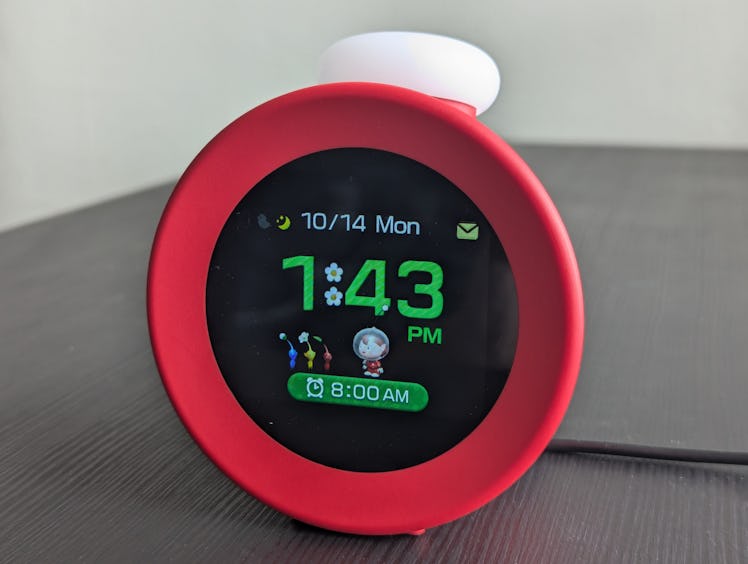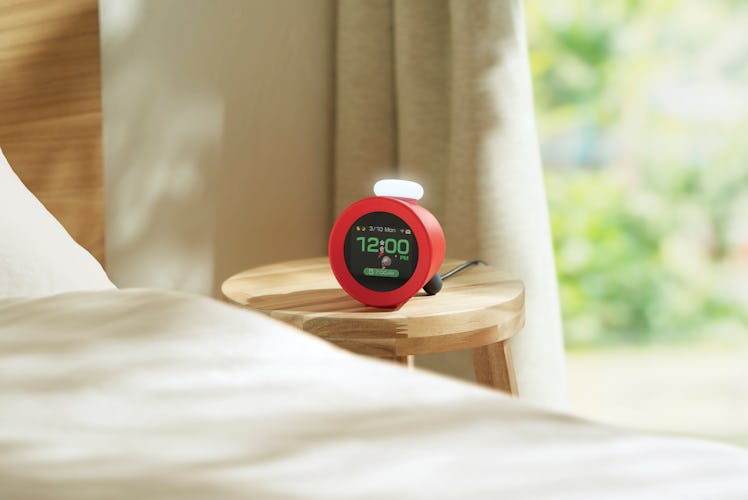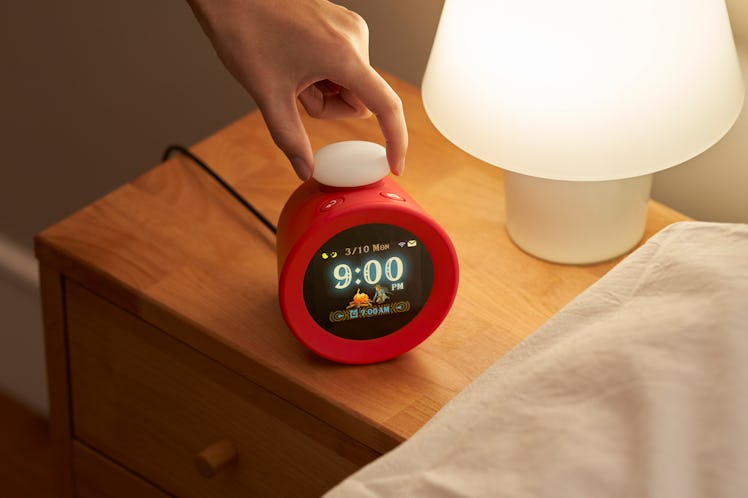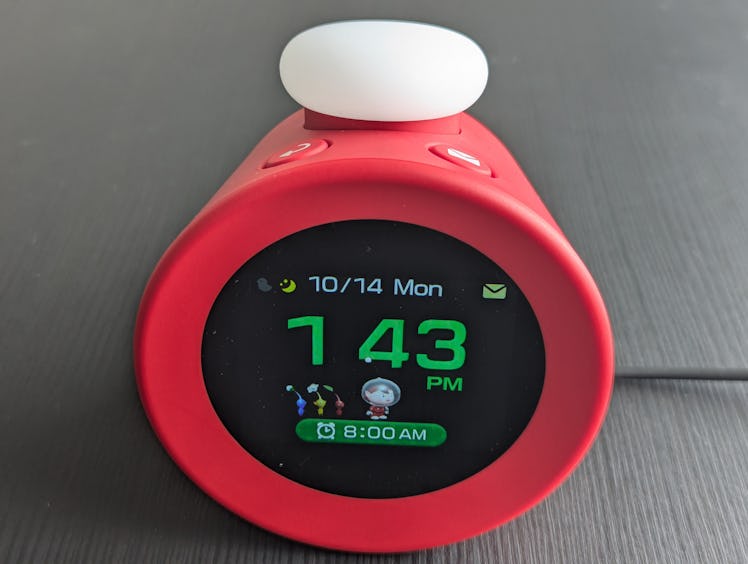
Last week, Nintendo revealed the existence of Alarmo — excuse me, Nintendo Sound Clock: Alarmo — an alarm clock that features sounds from various video games and a handful of other features that allegedly justify its $99.99 price tag. Inverse was sent an Alarmo to try out for ourselves, and while I’m not sure waking up to its sounds of Splatoon paint guns and imperiled Pikmin is the ideal way to start the day, it’s nonetheless a cool little gadget with plenty of Nintendo charm baked in.

Alarmo features sounds from five different Nintendo games.Nintendo
You can choose from 35 different alarm sounds, all pulled from Super Mario Odyssey, The Legend of Zelda: Breath of the Wild, Pikmin 4, Ring Fit Adventure, and Splatoon 3. Your own taste in games will probably determine your favorite sounds, but I found that certain games were more suitable depending on what vibe I wanted to wake up with, from Splatoon 3’s more boisterous tunes to Breath of the Wild’s calmer soundtrack. Nintendo says it will add more alarms in future updates, starting with sounds from Animal Crossing: New Horizons and Mario Kart 8 Deluxe.
What really makes Alarmo distinct from your standard alarm clock isn’t just the Nintendo sounds, but also its motion sensor features. Every few minutes after your alarm goes off, Alarmo will start playing increasingly frantic sounds based on which alarm you’ve selected, which you can turn off by moving around. The alarm also shuts off automatically once you get out of bed, with dire aural consequences if you refuse to get up for too long. After 20 minutes, Alarmo will play a more panic-inducing alarm, which also varies based on which game you select as your alarm. Perhaps the most motivating are the sounds of Breath of the Wild’s Guardians firing lasers directly at your bed, or the sound of Pikmin drowning.
If you get up but then get back in bed within 20 minutes, the alarm will start all over, after displaying a brief, somewhat threateningly worded warning saying, “If you don’t move, the alarm will begin again.”

The Alarmo screen is nice and clear, with an auto-dim feature.Nintendo
The one major caveat is that Alarmo’s motion tracking features really only work their best if you tend to sleep alone. Suppose you live with a partner and you wake up at different times. You wake up to Mario shouting in your ear and get out of bed, after which the alarm shuts itself off. But since your partner is still in bed, the alarm will quickly begin going off again, waking them up and probably making them question whether you’re really worth it. In testing this feature, I found that it takes a minimal amount of movement for Alarmo to detect your presence, so unless you share a bed with someone who sleeps like a stone, there’s probably no chance of avoiding the clock’s watchful eye.
When this limitation of Alarmo was discovered, the internet had a lot of fun declaring that Nintendo had made an alarm clock only single people could use. In practice, it’s much easier to work around than it might sound. By just pressing the large control knob on top of Alarmo, you can shut the alarm off, and there’s also an option to shut off motion controls entirely. Yes, that’s a lot less fun than controlling it solely through motion, but it’s a small price to pay to save your relationship.

Alarmo’s motion sensor is a cool feature with a few drawbacks.Nintendo
Alarmo’s motion controls bring some other complications, too. The clock tracks how long you stay in bed each night and how long it takes you to wake up in the morning. These figures are also based on when it detects your movement, though, so they’re imprecise for all the reasons listed above. At least, that’s my excuse for why Alarmo’s records say I spent more than 12 hours per night in bed this weekend.
Along with its alarm, you can set up the clock to play “sleepy sounds” when you climb into bed. To do this, you select your usual bedtime, and as long as you tuck yourself in after that time, you’ll be treated to different soothing noises from the same game as your selected alarm sound. One night, I stayed up later than usual, and was startled by the sounds of hooting owls and strange chimes coming from my bedroom. It turns out one of my cats had climbed into my bed for a nap, activating Alarmo with her movements. Selecting a new alarm sound while you’re already in bed also seems to shut off the sleepy sounds, which made me wish you could simply turn them on at will. These sounds also only stay active for ten minutes, and being able to pick a longer duration would be nice.

You can control Alarmo mostly with the large knob on top.Nintendo
Aside from its main features, Alarmo is also notable for a few more subtle reasons. It’s mostly controlled through a giant knob on top, and both the physical controls and its on-screen interface are as pleasant to use as you’d expect from Nintendo. I’d never say an alarm clock is fun to use, but this is maybe as close as you can get. Its screen is also nice and clear, with the added bonus of an adjustable brightness that you can set to automatically adjust to your room’s brightness. The display also shuts off when you’re sleeping and comes back on when Alarmo detects motion, saving you from blasting your eyeballs with your bright smartphone screen to check the time when you wake up in the middle of the night.
All in all, Alarmo is a cute replacement for your normal alarm clock that’s just as bizarre of a product as it sounds. Its motion sensor is considerably more reliable than I was expecting, though it obviously can’t overcome the limitations of detecting your pets or your partner when you don’t want it to. I’m not the kind of person who would shell out $100 for an alarm clock regardless of how cool it is, but if you’re a Nintendo fanatic — or better, have a kid who is — it’s easy to see why you’d want to make room on your nightstand for Alarmo.
Low price and high quality
24/7 amazing services
Strict quality standards
Complete categories